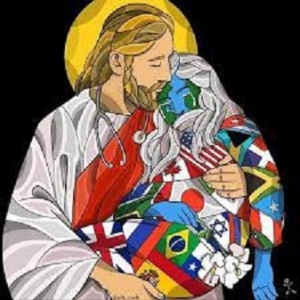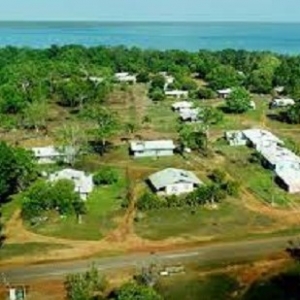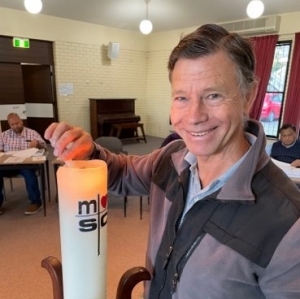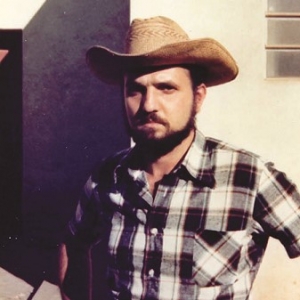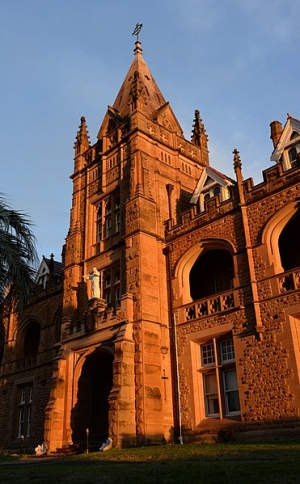Peter MALONE
Happy/ Blessed Feast of the Sacred Heart.
Happy/ Blessed Feast of the Sacred Heart.
A Feast-day Reflection

GOSPEL POINTERS TO JESUS’ SACRED HEART
How do the Gospels reveal Jesus. Heart? Some pointers.
Perhaps best to start with John’s Gospel, chapter 1, opening up language of the Trinity, the beginning, the Word, the Word with God, is God. Then incarnation language, the Word made flesh, the Son, God’s human experience, Jesus living our lives with us. But, this opening hymn of John’s Gospel goes on to make quite clear who Jesus is, who the Son is, the Son who is nearest to the Father’s heart – and, who in his life as the Word made flesh, has made known the very heart of God to us.

We know that Mark’s Gospel is full of stories with great detail about what Jesus said and did. In terms of his heart, we can go to the end of chapter 1, Jesus and the healing of the leper. Those who encountered Jesus seem to have responded so well to Jesus as a man of heart. The leper was prepared to disobey health regulations, no social distancing, but came out of his quarantine. He was confident in the compassion of Jesus, ‘if you want to, you can heal me’. The Jerusalem Bible translation emphasises Jesus’ response, ‘Of course, I want to…’. And, then, the literal outreach, personal touch and touching. The postscript of this story is that Jesus was prepared to forego the regulation in his compassion for the sick man. He accepted that for 40 days he would be leper, sharing our sickness with us, relegated to quarantine outskirts, ritual tearing his hair, throwing dust on himself and, experiencing human anonymity by having to warn people away, Jesus ‘unclean’.

There was a tradition that Luke’s gospel was referred to as the gospel of compassion. Any number of stories, any number of encounters, when Jesus revealed that he was a man of the heart. But, the heartiness of Jesus extraordinary love is very clear in the stories he told, the parables which undercut assumptions about human care. In Luke 15, probably Jesus’ most famous parable, referred to as the parable of The Prodigal Son, and, sometimes, The Prodigal Father, a suggestion could be made that it could be called the parable of The Most Permissive Father. And, Jesus is telling us that this is what God, his father is like (and Jesus knows because he is nearest to the Father’s heart). The father has no hesitation in giving into his son’s unreasonable and presumptuous demand for his inheritance, allows him to go off, potentially to ruin his life. But he has never cut him off, the son can always return, not only repent, but experience his father rushing to meet him, embracing, lavishing clothes and feast on him, rejoicing to recover his lost son. (And, calmly going out to reason with the unreasonable older son: ‘everything I have is yours’.)

Which leaves the Gospel of Matthew. No surprise when we look at Chapter 11, Jesus’ prayer of wonder to the father, revealing the love of God to those who might not have been expecting it. There are the words of his heart ’reassurance’. When we are tired, feeling overburdened, Jesus invites us to come to him and promises relief, assures us of respite and rest. And he can do this because he is gentle. He is in no way is uppity, he is grounded, realistic about life, humble of – heart. But, after the rest, we are ab again le to shoulder the yoke with Jesus, continue our life and work, but its demands seem lighter when carried with him.

We are blessed to have such solid grounding as we develop our Spirituality of the Heart -

and a spirit of delight in that Prodigal Father' heart.
Statement by MSC Provincial Chris McPhee Garden Point Mission – Melville Island.
Statement by MSC Provincial Chris McPhee Garden Point Mission – Melville Island
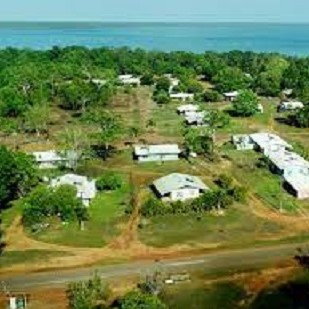
- Class Action Completed
Today completed a class action by Indigenous Australians who were brought to Garden Point Mission on Melville Island.
The class action was against the:
- Commonwealth Government;
- Darwin Diocese;
- Missionaries of the Sacred Heart; and,
- Daughters of Our Lady of the Sacred Heart.
- An Apology
The process finished with the Provincial of the MSC’s, Chris McPhee, and the Provincial of the OLSH, Philippa Murphy, and a representative from the Commonwealth Government, speaking to the claimants and family members personally, to deliver their apology.
Chris anticipated that an apology would take place at a later date, however, they were asked to speak this morning, so Chris spoke spontaneously and a paraphrase of what he said is as follows.
We, the Missionaries of the Sacred Heart, have been in the Northern Territory since 1906.
I am Chris McPhee, and I am the Provincial of the Missionaries of the Sacred Heart. I joined the MSC in 1992, and I was proud of our history here in the Northern Territory.
In reading your stories over the last two years I can say personally that I am ashamed of what has happened in our Australian history and of how we, MSC, were complicit in this event. I am also ashamed of the behaviour of some of our men who worked at Garden Point mission. Today, I feel very sad and emotional and on our behalf I am sorry. I also want to thank those of you who have had the courage to come forward and to shed a light on this dark page of Australian history – for this I say thank you.
We are Missionaries of the Sacred Heart, and today we want to, hopefully, walk together, with our hearts on the outside (as he pointed to his heart) – hand in hand. To journey together into the future as one heart.
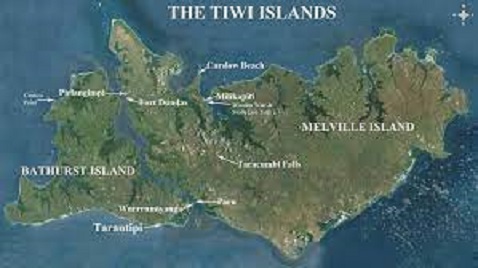
- Media Statement
GARDEN POINT MEDIA STATEMENT
Parties, including Slater and Gordon Lawyers, for the claimants, the Catholic Diocese of Darwin, Missionaries of the Sacred Heart, Our Lady of the Sacred Hearts Sisters and the Commonwealth of Australia have met in Darwin over the last three days to resolve claims brought by a number of Indigenous Australians who between 1942 and 1969 were placed as infants, children and adolescents into the Garden Point Mission on Melville Island.
Today represents the conclusion of two years of investigation, discovery and research into those circumstances and what happened to those Indigenous children.
The circumstances that prevailed during that time, do not require mention. What has been acknowledged by all the parties is an overwhelming desire to recognize and address, through an appropriate resolution and access to justice, what occurred in the past.
The claims have been resolved. That resolution has been achieved through overwhelming cooperation on behalf of all parties to ensure that justice was bestowed in the right way. This resolution process involved a meeting between survivors, church representatives and the commonwealth which brought with it a level of validation, apology and remorse.
Today is symbolic for many of the Indigenous who spent time at Garden Point. Their circumstances have been acknowledged and this brings, as best as it can be a conclusion to what was a difficult and traumatic period in their lives.

Patrick Moloney MSC, 60th Anniversary of his death, his heritage in Central Australia.
Patrick Moloney MSC, 60th Anniversary of his death, his heritage in Central Australia.
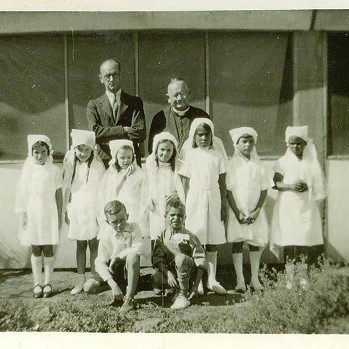
Here is something of that Central Australian history. An excerpt from: Francis McGarry and the ‘Little Flower Black Mission’: encounters of a Catholic lay missionary with Indigenous people of Central Australia 1935–1944. (By Charmaine Robson)
In 1935, in accordance with Gsell’s request, the MSC Sydney province sent Father Patrick Moloney to Alice Springs to open
a mission station in Central Australia. Frank joined him shortly afterwards as
a lay assistant. His exact steps in pursuit of this new vocation are unknown,
but Gsell’s speech was no doubt influential. Frank’s letters repudiate any
suggestion of his volunteering for the work; the decision, he implied, was
God’s: “I did not come up here of my own will as when Father Perkins [MSC
Provincial Superior] asked me if I would go to Alice Springs, I asked for
three days to think it over. On revisiting him I remarked that I had not made
up my mind but if he thought it God’s will, then I would willingly go”.
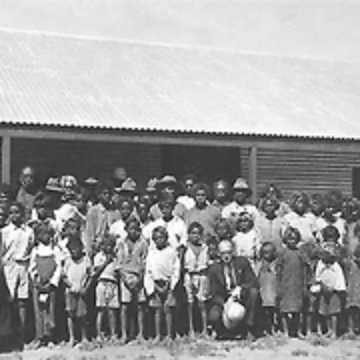
Looking for Mission
In March 1935, Frank arrived in Alice Springs to take up residence with
parish priest, Father Moloney, at the Catholic presbytery. In his history of
the Australian province of the MSC, Father Antony Caruana explains that
Moloney was a major force in shifting the Order’s priorities from overseas
mission work towards the Aboriginal apostolate from the late 1920s.
Moloney’s enthusiasm ultimately outweighed his superiors’ reluctance
to expose their men to the harsh living conditions and isolation of remote
Australia.16 Furthermore, like Gsell, Moloney believed Catholics had a responsibility
to redress the wrongs inflicted on Aboriginal people through colonisation.
For him, evangelisation was part of the solution.
Prior to Alice Springs, Moloney established missions at Palm Island
(1931) and Menindee (1933). He was fifty-eight and walked with a cane, and,
by his own admission, was neither strong nor in good health. Nonetheless,
he was resolute and excited about starting this third mission. Frank, twenty
years his junior and physically fit, could do the manual jobs, domestic chores
and drive the car. Both men also clearly expected that Frank would also play
a part in the main work of the mission: Christianising and giving material aid
to the Aboriginal people.
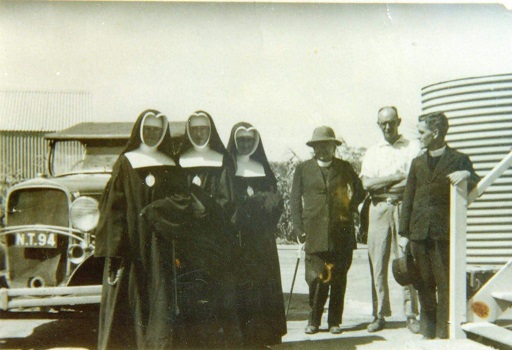
Moloney’s original plan for the mission was to seek Aboriginal people
who’d had little contact with Europeans. In his view, they had the best
chance of becoming successful Catholic converts, having avoided the vices
and immorality he associated with the undesirable Australian way of life.
He and Frank made two long, hazardous expeditions by car into the desert
to this end, but returned each time, their hopes dashed. On 3rd October 1935,
Moloney proposed that they “go out and look for blacks” in closer proximity
to the town.19 In a camp on the edge of town they met a group of Eastern
Arrernte people, including Brandy McMillan and his family. Frank’s letters
state they were amenable to the prospect of a mission for their children, and
that some asked Moloney to baptise them immediately, to which he agreed
Moloney and Frank ascribed particular significance to the founding
date of the mission, since it was the Feast Day of St Therese of Lisieux,
known also as ‘Little Flower’. St Therese had been canonised only a decade
earlier and enjoyed immense popularity in this period, notably among the
Catholics of Adelaide, Moloney’s home city. As a pious woman whose short
life consisted simply of prayer and work, she became a symbol of enduring
faith in an increasingly secular society, and was known for her generous
bestowal of miracles. Moloney and Frank believed her intercession had
brought about their mission, and they named it Little Flower, accordingly.
Furthermore, Moloney believed that St Therese had meant the Mission to be
Frank’s, not his, as officially it had to be. In early 1936, he informed Frank,
“She got me to baptise then only because it was not your office to baptise.
But the mission is yours and will remain yours for many a long day I hope.”

New Book, Khoi Nguyen MSC, Alive with Disability
New Book, Khoi Nguyen MSC, Alive with Disability
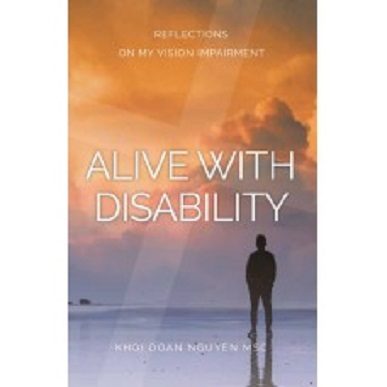
When the Khoi Doan Nguyen was diagnosed with an increasingly deteriorating eye condition, his reactions were understandably feelings of shock, confusion and disturbance. A young man, actively involved in priestly and congregational ministry, with a passion for communication, a gift for writing, a serious interest in all areas of theology and mission, his eyesight problem initially caused him distress and despair.
Alive with Disability acknowledges those early reactions, the times of depression and deep anxiety, but reveals how gradually – with professional and spiritual help – he recognised that the condition was also an invitation to dare stretching the heart to a new state of acceptance, respond to it with a new vision and gradually welcome it as a reality in his life that would determine how he would live fruitfully as person, priest, teacher, writer, religious, within his family and community.
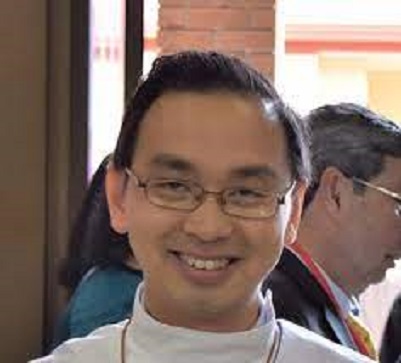
The book is intensely honest. Importantly, it is written for all of us because all of us live with some kind of disability, since disability, limitation and imperfection are universal features of all human life. The Khoi gradually realised that his disability was not only his condition but his companion; and in these twenty-one reflections, he teaches us how disability itself forces all of us to approach prayer, spirituality, our understanding of the mystery of God and life in new, deeper ways.
Alive with Disability is an expression of his faith journey with a profound longing to rediscover who he is through the relationship with his disability companion and share those insights and experiences with his fellow travellers – all of us, with our own disabilities. It is also an invitation to journey with one another in our shared human condition as God’s image and likeness.
$22.95
Other books by KHOI.

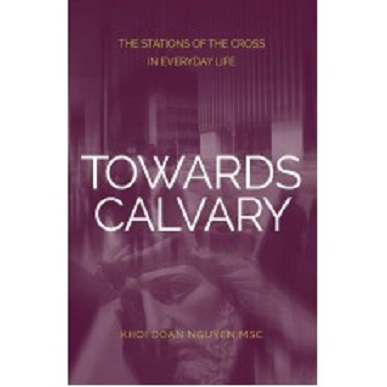
For any enquiries please call us on +61 (0)477 809 037
MSC General Conference 2021 - ZOOM
MSC General Conference 2021 - ZOOM

The General Conference takes place between General Chapters - every two years. The last Conference was held in Korea in 2019. The next Conference begins next Wednesday by Zoom. This is a photo from the rehearsal last week,

From the General Bulletin.
We share with all of you that we have begun the journey of preparation for our next MSC General Conference. It will be the first conference in MSC history to be held online.
We are living in a crucial time for consecrated life in general, and we are not referring only to the pandemic situation, but to the present moment that our world is living and facing. Consecrated life faces a crossroads where it either transforms and focuses on living from its identity or it ceases to have meaning and significance - it dies. There is no other way than transformation and authenticity.
Certainly it is a challenging time of much suffering for humanity and for mother earth, but, unlikely as it may seem, it is also a time of opportunity and new ways to make the Heart of Jesus loved everywhere. And the realisation of the next General Conference is no exception in this new normality that we are all experiencing everywhere.
The road will be very different from the one we are used to, but we feel called to deconstruct and unlearn in order to discern, listen and build in synodality and communion what the Spirit and the Mission are asking of us today.
The General Conference seeks to strengthen the WHOLE of MSC Mission everywhere. Each MSC makes the WHOLE of mission present wherever it is, therefore, all MSC are part of the Conference. We thank you for your prayers and contributions so that the preparation and the realisation of this Conference can be an instrument at the service of the Mission.
The Conference will take place in three different moments, which are part of a dynamic and interactive WHOLE that seeks to achieve the objectives of every General Conference. (MSC Const. No. 225-228).

Provincial Conference Reports - Photo Diary
Provincial Conference Reports - Photo Diary
We presented the Conference Report by Provincial, Chris McPhee MSC. Peter Hendriks MSC, Deputy Provincial has sent photos of those who presented reports to the Conference.

Mark Hanns MSC lighting the Chapter and Conference candle.

Director of the Retreat House, St Mary's Tower, with Dominic Gleeson MSC.

Mark McGinnitty, MSC Education

MSC Mission Office, Roger Purcell MSC

Heart of Life Centre, Director Paul Beirne, via Zoom

Justice and Peace, Claude Mostowik MSC

Lay MSC, Alison McKenzie

Presiding at the Conference, Chris McPhee MSC

The Assembly
Chevalier Family Justice and Peace, First Friday June 2021. Let us praise God including in our prayers Nature: plants, water, wind, cosmos, fire, stars…
Chevalier Family Justice and Peace, First Friday June 2021
Let us praise God including in our prayers Nature: plants, water, wind, cosmos, fire, stars…

With thanks to the MSC Sisters, Australia, Website.
Practice the “R”
Recycle whenever you can and place all recyclables in the right place, do not mix
Reduce – Re-use – Repair as much as you can instead of replace
Take care of the plants
Take care of bees, do not kill them, a great part of the life of the planet depends on them.
Avoid using single-use plastic bags. Carry always your cloth shopping bags
Consider the use of Renewable Energy, i.e., Solar panels etc.
Responsible use of water
Conserve energy, unplug devices when not-in-use
Eat less meat and more plant-base foods
Drive less and travel sustainably by using public transport
Buy in local area. Support community, save the environment by purchasing local goods.
Work with the Laity in the Parishes and Workplaces
Give voice to the voiceless and advocate for Nature in our environment and beyond.

Guatamala, Quiche, E.J.Cuskelly perspective. June 4th, first time celebrating the new feast of the beatified martyrs.
Guatamala, Quiche, E.J.Cuskelly perspective.
June 4th, first time celebrating the new feast of the beatified martyrs.
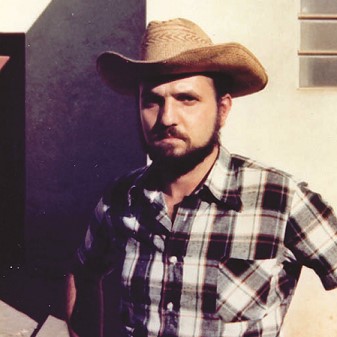
Jose Maria Gran MSC
For those visitors who would like some reading, below is an excerpt from a talk by E. J. Cuskelly MSC about his experience while Superior General about visiting Guatamala and experiencing its history and MSC missionaries there. It throws light on the Spanish colonisation of Central America and the consequences. (It is also an insight into Jim Cuskelly himself and his perspective as Superior General.) With thanks to Tony Arthur MSC for text and photos.

Let me pass now to Guatemala in Central America, where many MSC have lived and worked and some have died a violent death. Guatemala is a delight to the eye and the ear. The place-names ring like bells run wild: Chichicastenango, Sacapoulas, Chimaltenango. There, in the highlands, the air is clear as crystal, the colours of the Indian costumes are as brilliant as birds of paradise, and the sun sets in a glory that is as warm as the smile of God.
In January 1980, in this strikingly beautiful land, I met with a group of MSC missionaries, my friends and brother priests. On the shores of Lake Atitlan framed majestically by its three volcanoes, we talked of the coming murder of at least three of their number. We knew that a brutal military government had placed their names on its hit-list. In Australia, we find it hard to imagine the brutality that exists as an everyday reality in other lands. However, though hard for some to believe, it is easy to understand. Those of you who have seen the film “Romero” would have some idea of the situation in many Latin American countries.
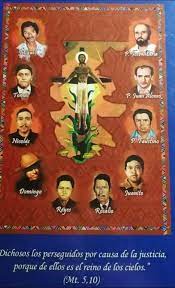
The Spanish conquistadors invaded Guatemala in 1522. They had horses; they had guns. The Indians had neither and were easily defeated. The Spaniards took for themselves (and their descendants) all the more fertile lands. They made their own laws about land-registration. Their descendants prospered. Some of them became very rich with plantations of coffee, sugar, bananas and other tropical fruits. The Indians were driven back into the hills. They knew nothing about land-laws. Deprived of their former lands, they set up their little farms on the hillsides. There they grew their corn and their peppers. They ran a few cattle, pigs and chickens and eked out an existence right on the poverty line. There was a way for them to earn a few extra dollars and to clothe their families. They could go down to the coast to work on the farms and plantations of the rich. There they earned less than a dollar a day - about $5 a week (I’m speaking of the 1970s). Australians would earn between three and four hundred dollars a week for the same work. Most of their $5 a week would be paid back to the rich to buy food and clothes. The rich land-owners owned most of the shops as well.
Some years ago, MSC missionaries came from Spain to work among the Indians who had been Christians of sorts ever since the days of the conquistadors. The missionaries ministered to their spiritual needs. They also taught them better farming methods; they imported superior quality cattle, helped them to form their own cooperatives and to set up their own shops. The missionaries also talked about social justice and the concept of a just wage.
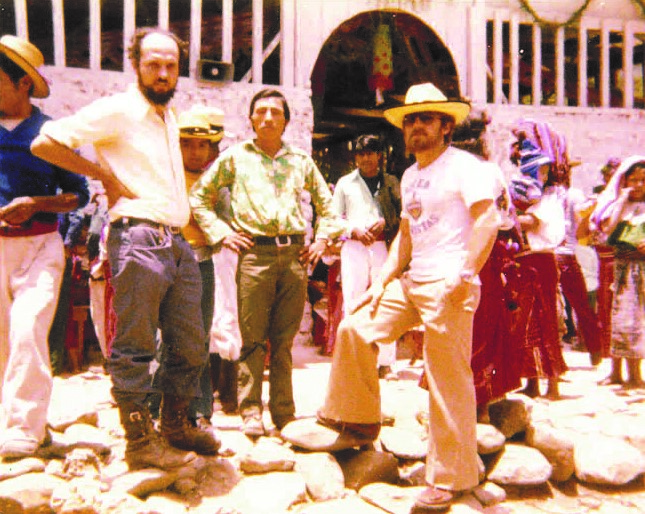
Missionaries with the People
The rich families felt threatened. If they had to pay just wages, if they lost their cheap labour, they would lose a lot of their wealth. They paid the military to force the Indians to work for them, to destroy their cooperatives and even to shoot their leaders. The next step was for the ‘big-wigs’ in the military to decide that, if they were to do the dirty work for the rich, they should have some share of the riches. The army took over the government. Then retiring generals and colonels also took over tracts of land where the Indians were living. Invoking the old land laws, they claimed legal justification for this robbery. If the Indians resisted, they were shot.
Then the missionaries spoke out. They were not political men, but they were friends of the Indian people. They had the courage to insist that the human dignity of the Indians should be respected, that they had basic human rights: they had a right to a just wage; they had no obligation to work for the rich plantation owners - they had a right to the lands which the military officers were stealing from them. It was a crime to rape their wives and daughters; it was a crime to shoot their young men.
This proclamation of the Gospel did not please the rich and powerful. The rich resented losing cheap slave labour. The military resented losing a chance to get rich at the expense of the Indians. All of them feared that the priests would make public the atrocities which the soldiers were committing with the backing of the rich.
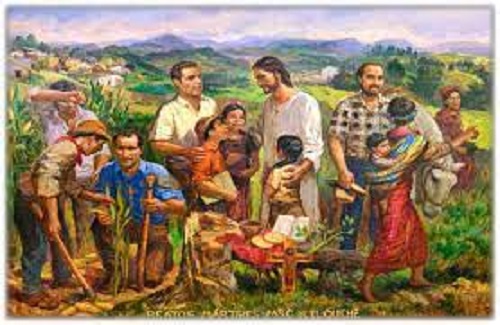
Jesus and the Martyrs
During those days in January 1980, on the shores of Lake Atitlan, surrounded by the beauties of God’s creation, we MSC discussed the ugly deeds wrought by evil men. All of us were afraid. Some were afraid that they would be the ones to die; the rest of us feared that soon we would have to bury our dead. We asked whether it would not be best for those on the hit-list to leave the country while there was still time.
Someone said to me later: “There’s an easy solution. You are their superior; just order them to leave.” Like many easy solutions, this was no solution at all. I was sure that the missionaries would not feel bound by any such order. They believed that it was their duty to stay with their people, in spite of the danger to themselves. Furthermore there are two ways of destroying a missionary. One way is to assassinate him while he is carrying out his duties for his people. The other way is to have him appear to desert both his duty and his people. The second is, in its own way, a type of death, and, for the dedicated missionary, it is worse than the first. They stayed with their people and I went my way.
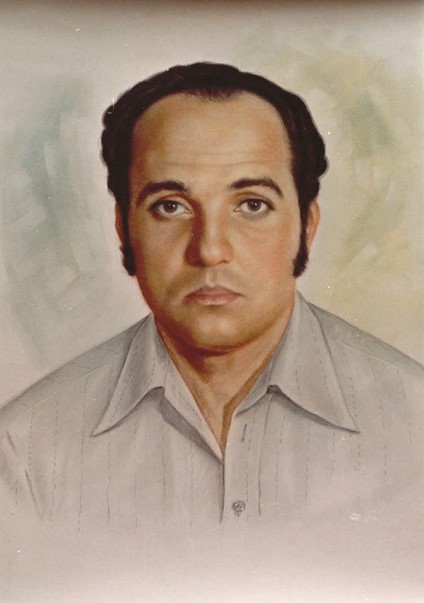
Jose Maria Gran
During the next few months I heard of the death of three of our priests. Firstly we learned that José Maria Gran had been killed, and in Barcelona I shared in his parents’ grieving. Then Faustino Villanueva was assassinated and later Juan Alonso. All three were the most pastoral and least political of men. Eventually, the Bishop declared the Diocese closed and ordered all priests and nuns to leave. It was then that the other MSC also left. Later some went back underground; we believe that at least one of them is dead.

Funeral, Jose Maria Gran
You will wonder: But how can people get away with such injustice? They get away with it, firstly, by being very careful about interviews permitted to foreigners. Secondly, they have developed their own philosophy of “The national security as the greatest good”. In this philosophy anything is justified if it protects “national security”. All that is opposed to it is a crime. It is sedition to criticise officials; it is a crime to oppose the government. It is a crime to oppose the military even when they are stealing your lands. This sort of philosophy justifies all kinds of violence perpetrated by the government. And sadly, President Reagan and others believed that all opposition to a government in power was leftist or Marxist. Nobody asked: how did these people come to government? Do they govern justly? In Latin America many governments came to power by violence; and they govern by cruelty and greed. But - I am wandering from my central theme.
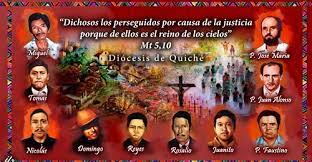
Like all religious orders, we MSC have a book of Constitutions which describes our ideals and our way of life. The second Vatican Council asked all religious to examine their Constitutions and bring them up to date. The old M.S.C. Constitutions contain the words: “Following the example of Jesus, we will strive to lead others to God with kindness and gentleness. Trusting in God’s grace, we will be ready, if necessary, to lay down our lives for them.” During the 1970s, there were some who thought that this was romantic stuff, beautiful but unreal. It should be omitted, they said. But in 1981 when we met in Rome to finalise the rewriting of our Constitutions, we thought of Jose Maria, of Faustino and Juan Alonso. We listened to this letter from the Church in Guatemala which read: “Your priests saw the Indians going hungry; they witnessed the suffering of the peasant families. They brought the light and strength of the Gospel to stop the enemies of God from spreading death through our land. This was their crime: to preach to all people their right to live with dignity.” Then we took up our pens and we re-wrote with pride: “We will be ready, if necessary, to lay down our lives for our people.”
Guatemala will be forever a part of my life. The Indians still suffer in that beautiful violent land. In spite of the sacrifices made, their world has not been re-born. We who knew them will live with the memory of our martyred brothers - especially when we hear songs like these: “Empty chairs at empty tables where my friends will meet no more. My friends, my friends, don’t ask me what your sacrifice was for.” (Les Miserables)
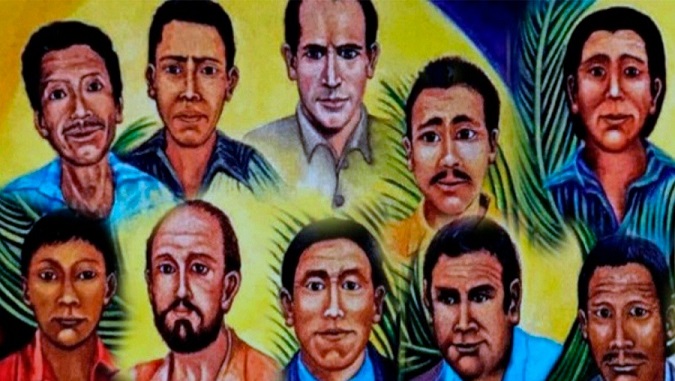
Advertising for Director, Province Care and Assisted Living The Australian Province of the Missionaries of the Sacred Heart
Advertising for Director, Province Care and Assisted Living
The Australian Province of the Missionaries of the Sacred Heart
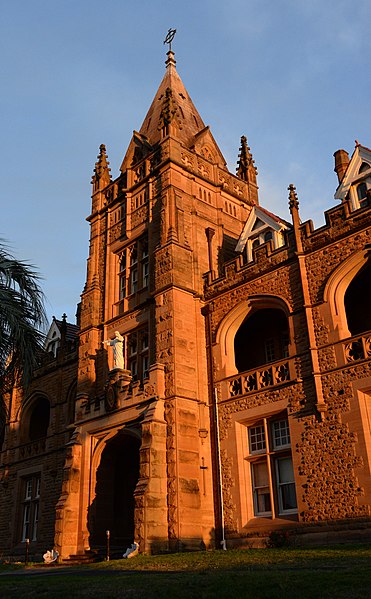
The Organisation
The Missionaries of the Sacred Heart (MSC) is a religious congregation founded in France in 1854, with Brothers and Priests within the Catholic Church numbering 1900 working in over 55 countries. In Australia, the Province has around 140 men, and their work is involved in various ministries including parishes, missions, education, retreat centres, hospitals, and health care. Around 36 Province members live in a retirement community in Kensington, Sydney, whilst others live in much smaller MSC communities - St Mary’s Towers, Douglas Park, NSW (6) – Kew (4) and Blackburn (10), Melbourne, Vic – Adelaide, SA (1) – Darwin, NT (1).
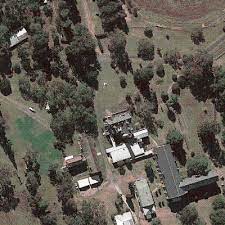
St Mary's Towers, Aerial view
The Role
Reporting to the Head of the Province, this newly created position is a key leadership role within the Province. As Director, Province Care and Assisted Living, your responsibility will be to ensure the ongoing care and support of our men in need of aged or health care Province wide, the management of the assisted living and facility management at the Kensington site, and ensure Province and Community Leaders are supported in their role of ensuring the wellbeing and accompaniment of each MSC member.
More specifically, you will be responsible for:
- Ensuring men in need of care and support receive appropriate, quality, cost effective care and support which is planned, delivered, monitored, and reviewed in a manner that reflects best practice aged care support in the home.
- Ensuring each man in need of assisted living support at the Kensington site receives a full suite of quality and cost effective clinical and care services provided through a mix of government funded and MSC privately funded services.
- Ensuring quality and cost-effective facility management, including catering and cleaning services, are in place and reflect best practice in the home and statutory standards, and
- Ensuring best practice with respect to management, policy, safety, compliance, and duty of care in the home
This opportunity is a permanent full-time role and based at Kensington. The role might, from time to time, involve some intrastate and interstate travel.
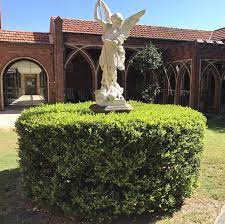
St Joseph's Home Kensintron
Key Requirements
Your experience in a service management, case management or care coordination role, as well as your appreciation for the life, mission, health and wellbeing, and ethos of Missionaries of the Sacred Heart will be key to this role.
Ideally, we are looking for someone who has the following:
- An alignment with the philosophy, mission objectives and values of the Missionaries of the Sacred Heart
- Understanding of the aged care sector and government funded services and how to make best use of them
- Ability to coordinate clinical and aged care to meet an individual’s requirements in the home environment
- Ability to apply regulations in relation to risk, safety and quality improvement processes
- Strong people management skills and experience
- Resource planning and contract management skills to ensure delivery of agreed outcomes at agreed service levels and within budget
- Ability to advocate and influence stakeholders to achieve desired outcomes
- Experience in facility or operations management (desirable)
- Relevant tertiary qualifications, in particular as a health or allied health practitioner.
This is an exciting time when we are building upon our internal capabilities, and a pivotal role supporting our mission and the health and wellbeing of our members.
For a confidential discussion about this position and to obtain a copy of the Position Description please contact Anthony Spata at REACH Human Resources on 0402 210 055 or This email address is being protected from spambots. You need JavaScript enabled to view it.

Application Process
Applications should include a Cover Letter and Resume. Your Cover Letter must include how your knowledge, skills, experience and personal attributes align with the Key Requirements of the role (as outlined above).
Applications are to be sent to This email address is being protected from spambots. You need JavaScript enabled to view it.
Applications close 22 June 2021.
For a copy of the Pos
Only candidates with the right to work in Australia may apply for this position.
Preferred candidates will be required to have a National Police Check clearance and appointment will be subject to a satisfactory check outcome.

Some significant June days for the Chevalier Family 2021
Some significant June days for the Chevalier Family 2021
Feast of the Sacred Heart, 11th June
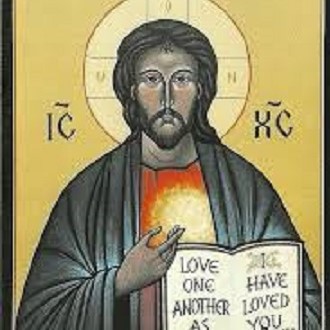
1 June, 1940
Mother M Electa, MSC, promises to build a chapel in honour of Our Lady of the Sacred Heart, in Hiltrup, Germany, to seek protection for the Congregation and its works during World War II.
3 June, 1874
Fathers Chevalier, Vandel and Jouët renew their profession before Pope Pius IX.
4 June, 1980
Father Jose Maria Gran Cirera, MSC, of the Spanish Province, is assassinated in Chajul, Guatemala.
Now the feast day of the Martyrs of Quiche.
5 June, 1944
During World War II, New Guinea Missionary Sisters were imprisoned in Ramale Camp, New Britain, in PNG.
6 June, 1846
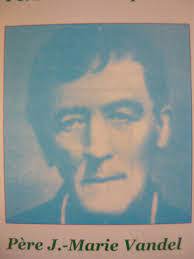
Jean-Marie Vandel is ordained a priest at Fribourg, Switzerland, at the age of 37 years.
7 June, 1861
The Vicar General of Bourges blesses the first part of the Church of the Sacred Heart in Issoudun. In the window near the altar of Our Lady of the Sacred Heart, is a stained-glass representation of Our Lady of the Sacred Heart, her first image. This same stained-glass window is today located above Our Lady's Chapel entrance door, situated inside the Basilica.
9 June, 1983
The three Generalates, Missionaries of the Sacred Heart, Daughters of Our Lady of the Sacred Heart and the Missionary Sisters of the Sacred Heart meet together for the first time. The first meeting took place at the MSC Generalate, Via Asmara in Rome.
10 June, 1854

Father Charles Piperon, a significant early member of the Missionaries of the Sacred Heart is ordained priest for the Diocese of Bourges.
10 June, 1855
Authorized to take the title of Missionary of the Sacred Heart, the young Chevalier ceases his functions as curate in Issoudun. He takes up the role of parish priest of Issoudun more than 20 years later in 1872.
12 June, 1874
On the Feast of the Sacred Heart, Pope Pius IX signs the decree of Approbation of the MSC Society. Father Chevalier also offers Pius IX a petition, asking him to consecrate the whole Church to the Sacred Heart of Jesus.
14 June, 1851
Father Chevalier and eleven other seminarians are ordained priests in the cathedral of Bourges by Cardinal Dupont.
14 June, 1937
Louis Vangeke, MSC, is ordained the very first priest for the Papua New Guinean Catholic Church. In 1970, he became Auxiliary Bishop of Port Moresby, PNG, and then Bishop of Bereina, PNG, until his retirement in 1979. He died in 1982.
15 June, 1851
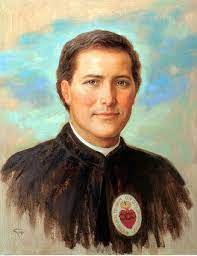
Father Chevalier celebrated his first Mass in a small chapel (no longer in existence) in the garden of the major seminary in Bourges.
16 June, 1868
First General Assembly of the Third Order of the Sacred Heart in Montluçon. Father Guyot is its General Director, in the name of father Chevalier. It is a Third Order for women without vows and is associated with the MSC congregation from 1865 to 1874.
17 June, 1851
Father Chevalier receives his first appointment: curate in the parish of Ivoy-le-Pré. He remains in this parish for 7 months before taking his second appointment in Châtillon-sur-Indre.
19 June, 1940

At 8:30am, Issoudun is bombed: 100 people died and many are wounded. The historic presbytery from which Father Founder was evicted in 1907, is destroyed.
24 June, 1915
During the First World War, Missionary Sisters in New Britain (PNG) are imprisoned.
26 June, 1859
Laying of the first stone of the new sanctuary of the Sacred Heart in Issoudun by Monsignor Caillaud, Vicar General of Bourges.
26 June, 1984
Sister Klara Sietman, MSC, is elected as 6th Superior General of the MSC Sisters.
28 June, 1928
Father Arthur Lanctin, MSC, 2nd Superior General of the MSC, 1901-1905, dies in Issoudun.
30 June, 1850
Jules Chevalier is ordained to the Sub-Diaconate, in the Chapel of the major seminary in Bourges.
